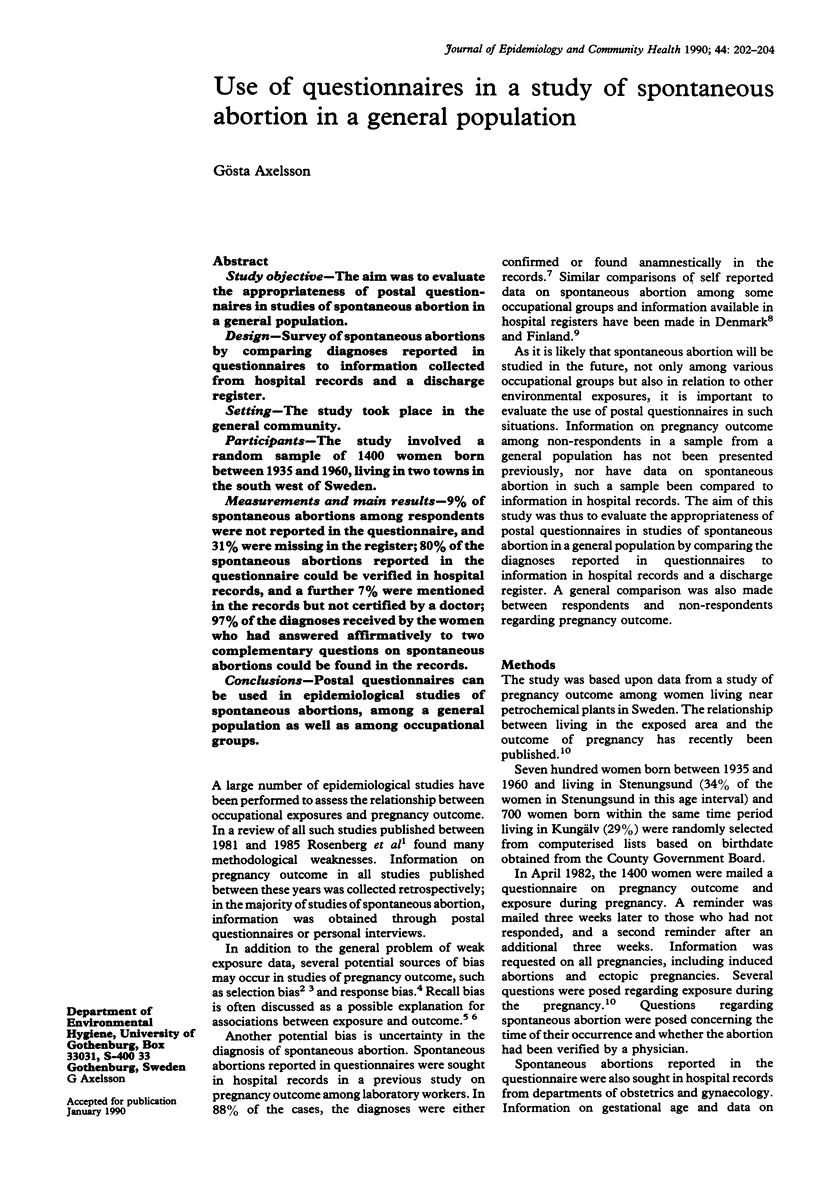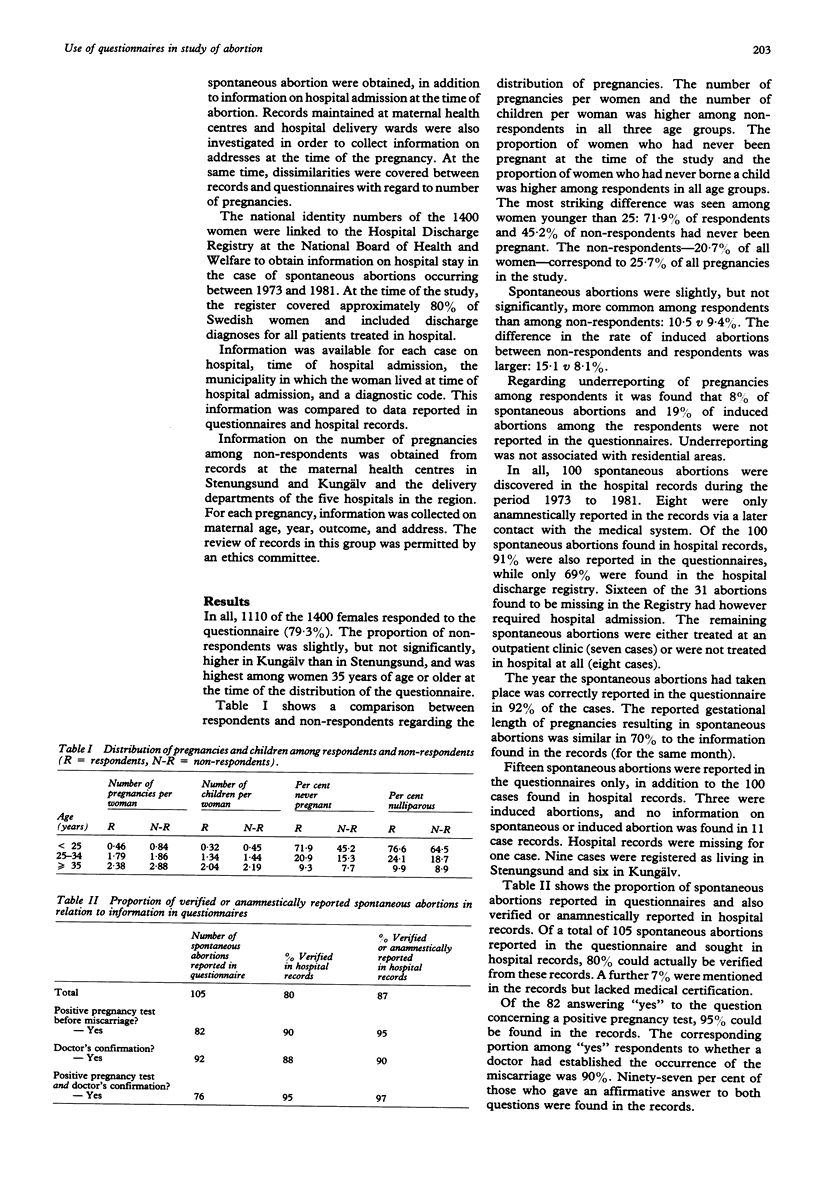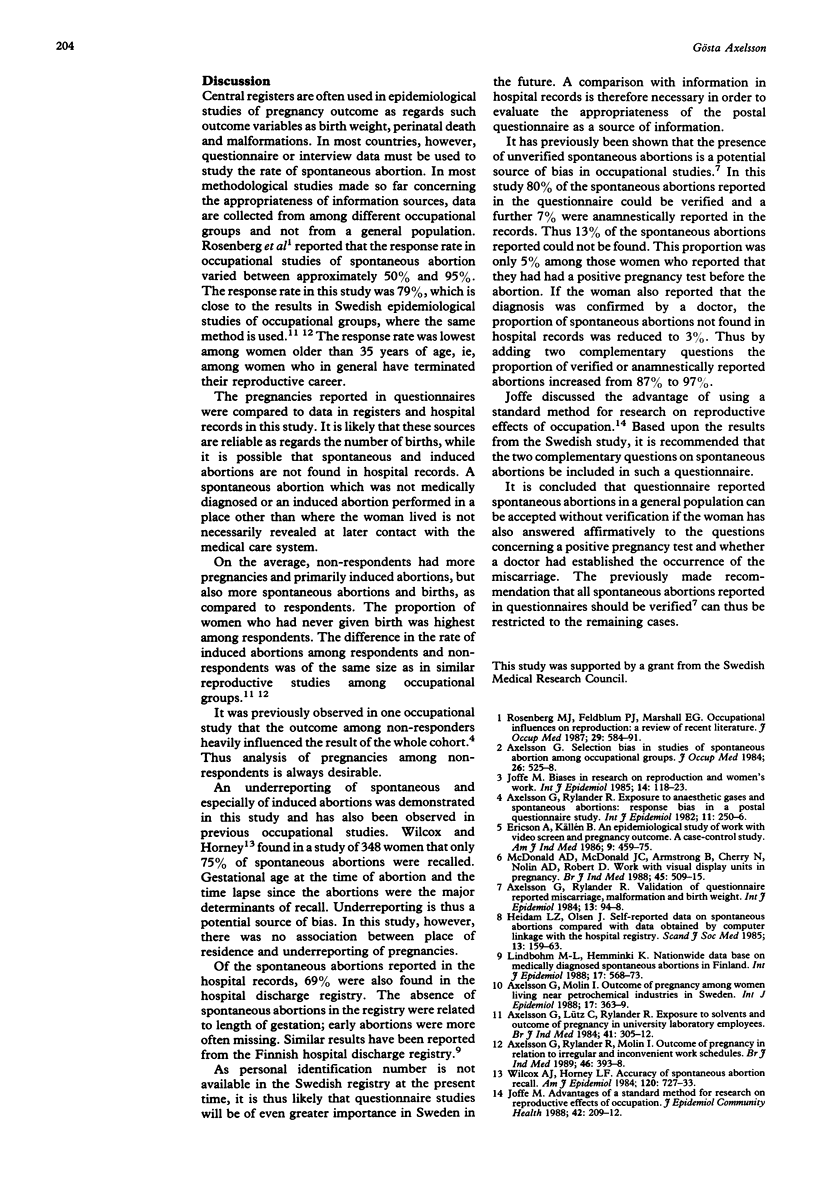Abstract
STUDY OBJECTIVE--The aim was to evaluate the appropriateness of postal questionnaires in studies of spontaneous abortion in a general population. DESIGN--Survey of spontaneous abortions by comparing diagnoses reported in questionnaires to information collected from hospital records and a discharge register. SETTING--The study took place in the general community. PARTICIPANTS--The study involved a random sample of 1400 women born between 1935 and 1960, living in two towns in the south west of Sweden. MEASUREMENTS AND MAIN RESULTS--9% of spontaneous abortions among respondents were not reported in the questionnaire, and 31% were missing in the register; 80% of the spontaneous abortions reported in the questionnaire could be verified in hospital records, and a further 7% were mentioned in the records but not certified by a doctor; 97% of the diagnoses received by the women who had answered affirmatively to two complementary questions on spontaneous abortions could be found in the records. CONCLUSIONS--Postal questionnaires can be used in epidemiological studies of spontaneous abortions, among a general population as well as among occupational groups.
Full text
PDF


Selected References
These references are in PubMed. This may not be the complete list of references from this article.
- Axelsson G., Lütz C., Rylander R. Exposure to solvents and outcome of pregnancy in university laboratory employees. Br J Ind Med. 1984 Aug;41(3):305–312. doi: 10.1136/oem.41.3.305. [DOI] [PMC free article] [PubMed] [Google Scholar]
- Axelsson G., Molin I. Outcome of pregnancy among women living near petrochemical industries in Sweden. Int J Epidemiol. 1988 Jun;17(2):363–369. doi: 10.1093/ije/17.2.363. [DOI] [PubMed] [Google Scholar]
- Axelsson G., Rylander R. Exposure to anaesthetic gases and spontaneous abortion: response bias in a postal questionnaire study. Int J Epidemiol. 1982 Sep;11(3):250–256. doi: 10.1093/ije/11.3.250. [DOI] [PubMed] [Google Scholar]
- Axelsson G., Rylander R., Molin I. Outcome of pregnancy in relation to irregular and inconvenient work schedules. Br J Ind Med. 1989 Jun;46(6):393–398. doi: 10.1136/oem.46.6.393. [DOI] [PMC free article] [PubMed] [Google Scholar]
- Axelsson G. Selection bias in studies of spontaneous abortion among occupational groups. J Occup Med. 1984 Jul;26(7):525–528. [PubMed] [Google Scholar]
- Ericson A., Källén B. An epidemiological study of work with video screens and pregnancy outcome: II. A case-control study. Am J Ind Med. 1986;9(5):459–475. doi: 10.1002/ajim.4700090507. [DOI] [PubMed] [Google Scholar]
- Heidam L. Z., Olsen J. Self-reported data on spontaneous abortions compared with data obtained by computer linkage with the hospital registry. Scand J Soc Med. 1985;13(4):159–163. doi: 10.1177/140349488501300406. [DOI] [PubMed] [Google Scholar]
- Joffe M. Advantages of a standard method for research on reproductive effects of occupation. J Epidemiol Community Health. 1988 Sep;42(3):209–212. doi: 10.1136/jech.42.3.209. [DOI] [PMC free article] [PubMed] [Google Scholar]
- Joffe M. Biases in research on reproduction and women's work. Int J Epidemiol. 1985 Mar;14(1):118–123. doi: 10.1093/ije/14.1.118. [DOI] [PubMed] [Google Scholar]
- Lindbohm M. L., Hemminki K. Nationwide data base on medically diagnosed spontaneous abortions in Finland. Int J Epidemiol. 1988 Sep;17(3):568–573. doi: 10.1093/ije/17.3.568. [DOI] [PubMed] [Google Scholar]
- McDonald A. D., McDonald J. C., Armstrong B., Cherry N., Nolin A. D., Robert D. Work with visual display units in pregnancy. Br J Ind Med. 1988 Aug;45(8):509–515. doi: 10.1136/oem.45.8.509. [DOI] [PMC free article] [PubMed] [Google Scholar]
- Rosenberg M. J., Feldblum P. J., Marshall E. G. Occupational influences on reproduction: a review of recent literature. J Occup Med. 1987 Jul;29(7):584–591. [PubMed] [Google Scholar]
- Wilcox A. J., Horney L. F. Accuracy of spontaneous abortion recall. Am J Epidemiol. 1984 Nov;120(5):727–733. doi: 10.1093/oxfordjournals.aje.a113940. [DOI] [PubMed] [Google Scholar]


